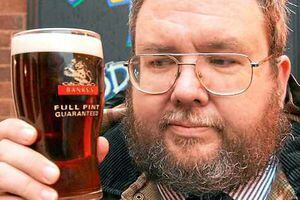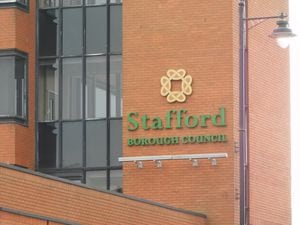Why mild ale is enjoying a revival
[gallery] As another famous mild ale goes out of production, Mark Andrews asks what it means for the future of the beer-style traditionally associated with the Midlands.

As another famous mild ale goes out of production,
asks what it means for the future of the beer-styletraditionally associated with the Midlands.
It is the beer the Black Country was built on. Amid the searing heat of the steel works, foundries and chain shops of the Victorian Black Country, there was one thing that everyone agreed was essential to making life more bearable. The steady flow of mild ale.
Click on the image to the right for more photos
Men like John Clarke, an archetypal Black Country man, were employed to keep the workers in beer. For 40 years John made the twice daily trip to his local pub to ensure the men who worked the Round Oak steel works in Brierley Hill didn't go thirsty.
But as the huge steel plants such as Round Oak have disappeared, what is the future of the beer which lubricated the human machinery that kept these places running?
This month Ansell's announced the end of mass production of its cask mild after more than a century, although it will still be produced in small quantities in keg form. The news comes five years after Hanson's, one of the Black Country's most famous milds went out of production after a similar length of time.
'Sales are definitely down'
Des Gallagher, head of brands marketing at Wolverhampton-based Marston's – probably the world's biggest producer of mild ales – says sales of Banks's Bitter have now overtaken Mild, although Mild is still the biggest seller in the West Midlands.
"Nationally, our bitter outsells mild 60-40, whereas 12 years ago it would have been 50-50," he says.
It is a similar story at Batham's brewery in Brierley Hill.
"Our mild sales are definitely down year on year," says production director Tim Batham. "Today it accounts for just three per cent of our sales, whereas in 2000 it was eight to 10 per cent."
Mr Gallagher says in recent years the fashion has been towards lighter beers, but the decline of the traditional community pub in favour of larger pub chains is another reason why sales are not what they were.
"The sort of pubs that sold mild have disappeared," he says.
Burgeoning number of microbreweries
Yet if all this sounds, like the beer itself, to all be a little dark, there is some bright news. While mild may no longer sell in the vast quantities it once did, there is a new generation of beer drinkers who appreciate the sweet, malty taste of mild.
But today's mild drinkers are unlikely to be foundrymen who quaff the beer throughout the working day. They are more likely to be young professionals, beer connoisseurs seeking to educate the palate. And the new milds are likely to be brewed in small quantities by the burgeoning number of "microbreweries.
John Howard of the Campaign for Real Ale says there has been a huge growth in the number of milds being produced compared to a decade ago.
"Today, in the UK, there are over 230 milds being brewed," he says. "At the start of the 21st century there were less than half that number, and it was considered to be an endangered beer. I think part of that is because people don't go out now for a standard beer, they want a variety."
Bob Jones, of Camra's Wolverhampton branch, agrees.
"There are probably more milds around than there have ever been before," he says.
Mr Jones says the end of Ansell's Mild mass production was little surprise after the company had been absorbed into the Carlsberg-Tetley group.
"I think part of the reason it has gone," he says, "is because there are so many new milds all around the country."
Assistant head brewer at Banks's Park Brewery Simon Yates believes mild will come back into fashion.
"It is a good beer to drink at lunchtime," he says. "I think the mild beers will be rediscovered."
Paradoxically, Des Gallagher says the trend towards light beers could actually work in mild's favour. As people seek a wider variety of flavours, new, younger ale buffs might also wish to explore the darker, nutty varieties.
One thing everyone agrees on is that the traditional Black Country mild is not likely to disappear any time soon.
To emphasise Banks's confidence in the continued popularity of the beer, the company recently decided to return to the Banks's Mild branding.
"Mild has been around for around 400 years, so I think it will outlive us," says Des Gallagher.
What is mild? -
While most people have a good idea what they mean by mild, Simon Yates of Banks's says it is hard to pin a firm definition.
Historically "mild" referred to young beer, as opposed to aged "stale" beer, which had a sharper tang. In modern times it has been used to describe beer which is mildly hopped.
"It's a fuller flavoured, easy drink, and generally not too alcoholic," says Mr Yates.
The classic definition is that while bitters have extra "aromatic" hops added afterwards to add to the flavour, hops are only added to milds when the wort is heated up. In other words, milds take their flavours predominantly from the malt, whereas bitters tend to take them from the hops.
"Milds have a distinct malty flavour, they generally have a lower alcohol content than bitter, and have a much darker colour," says Mr Yates.
But there are exceptions to these rules.
Sarah Hughes Dark Ruby Mild, at six per cent, is considerably stronger than the average bitter, and Pardoe's Old Swan Original is a light beer, but with definite mild characteristics.
"Banks's Mild is not a particularly dark beer, it's one of the lighter milds," says Mr Yates.
Are you a fan of mild? What makes it your perfect tipple?
Have your say in the Comment box below.





